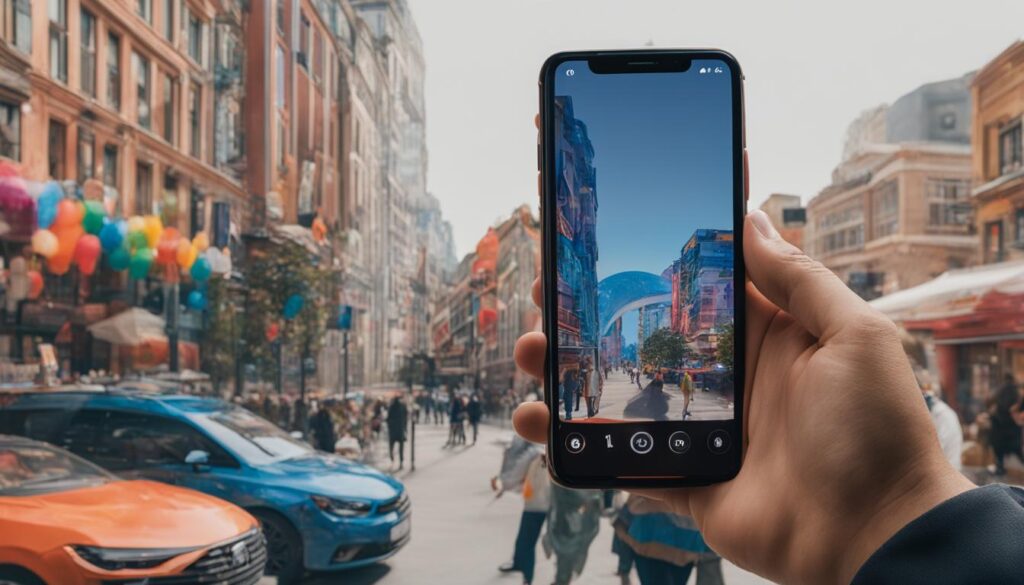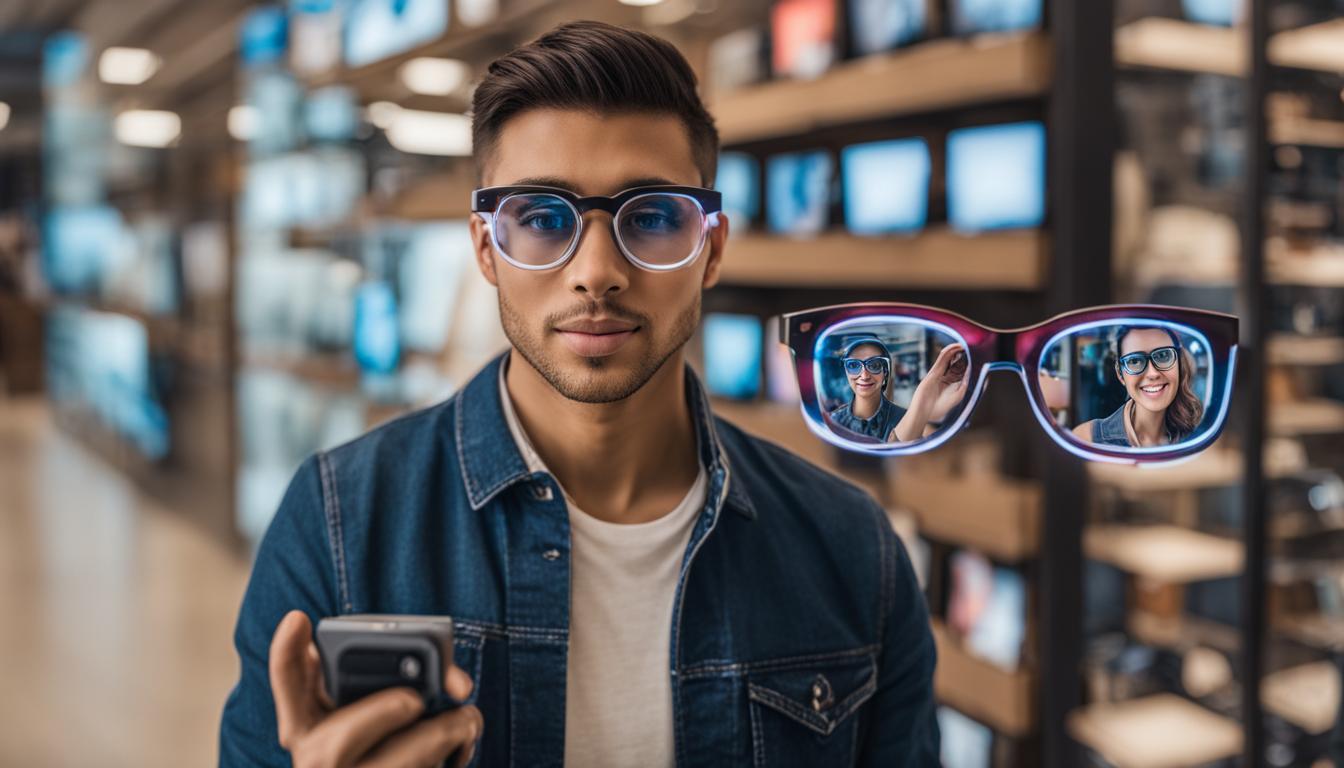Augmented reality (AR) and mixed reality (MR) are both immersive technologies that have their unique characteristics. AR overlays digital information onto the real world, enhancing your environment with virtual elements. On the other hand, MR goes a step further and allows the interaction between virtual and real-world elements, creating a more seamless blend of digital and physical experiences. Understanding the distinctions between these two technologies is crucial for businesses and individuals looking to leverage their potential and explore their applications across various industries.
Contents
What is Augmented Reality?
Augmented reality (AR) is a transformative technology that enhances the user’s perception of reality by superimposing digital information onto their view of the real world. Through the use of devices like smartphones, tablets, smart lenses, and AR glasses, virtual elements such as images, text, and animations are seamlessly integrated with the user’s physical surroundings.
AR has a wide range of applications across various industries, making it a versatile and powerful tool. In the gaming industry, AR has revolutionized gameplay by immersing players in virtual environments that interact with the real world. Healthcare professionals utilize AR to visualize medical data and assist in surgical procedures, improving accuracy and patient outcomes.
In the manufacturing sector, AR aids in complex assembly processes by providing visual instructions, reducing errors and increasing efficiency. Retailers also harness the power of AR to enhance the shopping experience by allowing customers to virtually try on products or visualize furniture in their own space before making a purchase.
Discover some real-world examples of augmented reality applications:
| Industry | Application |
|---|---|
| Gaming | AR games like Pokémon Go |
| Healthcare | AR-powered surgical visualization |
| Manufacturing | AR-assisted assembly |
| Retail | AR try-on experiences |
These examples only scratch the surface of the vast possibilities that augmented reality brings to various industries. As technology continues to evolve, AR is likely to play an increasingly integral role in our daily lives, transforming how we learn, work, and interact with the world around us.
“Augmented reality is not just a glimpse into the future; it is an active participant in shaping it.”
What is Mixed Reality?
Mixed reality (MR) is an advanced form of augmented reality that brings virtual and real-world elements together, allowing them to interact seamlessly. With MR, digital objects and information are integrated into your physical environment, creating a blend of virtual and real-world experiences. You can manipulate and interact with virtual elements as if they were physically present, enhancing your engagement and immersion in the digital content.
MR experiences can be enjoyed through MR headsets or translucent glasses, which enable you to see both the virtual and real-world simultaneously. This technology has immense potential across various industries, such as manufacturing, design, education, and entertainment.
Here are some examples of how mixed reality is transforming industries:
- In manufacturing, MR facilitates product prototyping and design iterations in a virtual environment, reducing time to market and improving the overall product development process.
- In education, MR allows students to engage with virtual simulations, enhancing their understanding of complex concepts through interactive and immersive experiences.
- In the entertainment industry, MR opens up new possibilities for creating engaging and interactive content, such as immersive storytelling and interactive gaming experiences.
Mixed reality is revolutionizing the way we interact with digital content, blurring the line between the virtual and real worlds. By leveraging MR applications, businesses can enhance productivity, streamline workflows, and provide users with unique and captivating experiences.
Key Differences between AR and MR
While both augmented reality (AR) and mixed reality (MR) share the common goal of merging digital and physical experiences, there are some fundamental differences between the two technologies.
One key difference lies in the level of interaction between virtual and real-world elements. AR primarily overlays digital information onto the real world without direct interaction between the two, while MR enables users to interact and manipulate virtual objects within their physical environment.
Another difference is the level of immersion. AR maintains a connection to the real world, while MR provides a more seamless integration of virtual and real-world elements. This seamless integration makes MR ideal for applications that require more advanced interaction and immersion, such as virtual prototyping, training simulations, and collaborative workspaces.
Comparison of AR and MR: Interaction and Immersion
| Factor | Augmented Reality (AR) | Mixed Reality (MR) |
|---|---|---|
| Interaction | Primarily overlays digital information onto the real world without direct interaction between the two. | Enables users to interact and manipulate virtual objects within their physical environment. |
| Immersion | Maintains a connection to the real world. | Provides a more seamless integration of virtual and real-world elements. |
Understanding these distinctions between AR and MR can help businesses and individuals choose the right technology for their specific needs and goals.

By harnessing the power of AR and MR, you can unlock new possibilities and create innovative experiences that blur the line between the physical and virtual worlds.
Conclusion
In conclusion, augmented reality (AR) and mixed reality (MR) are two immersive technologies that offer unique opportunities for businesses and individuals alike. AR enhances the real world by overlaying virtual information, while MR takes it a step further by enabling interaction and manipulation of virtual objects in the physical environment.
Understanding the key differences between AR and MR is essential for leveraging their potential and exploring their applications across various industries. AR is ideal for enhancing training programs, improving design processes, and creating immersive entertainment experiences. On the other hand, MR proves valuable in tasks that require advanced interaction and immersion, such as virtual prototyping, training simulations, and collaborative workspaces.
By harnessing the power of AR and MR, businesses can create engaging experiences, streamline processes, and transform the way people interact with the digital world. Both technologies have the potential to revolutionize industries and shape the future of human-computer interaction. Whether it’s enhancing training programs, improving design processes, or creating immersive entertainment, AR and MR offer exciting possibilities for innovation and growth.
FAQ
What is the difference between augmented reality and mixed reality?
Augmented reality (AR) overlays digital information onto the real world, enhancing the user’s environment with virtual elements. Mixed reality (MR) goes a step further and allows interaction between virtual and real-world elements, creating a more seamless blend of digital and physical experiences.
How does augmented reality work?
Augmented reality enhances the user’s perception of reality by overlaying digital information, such as images, text, and animations, onto their view of the real world. This can be experienced through devices like smartphones, tablets, smart lenses, and AR glasses.
What is mixed reality?
Mixed reality (MR) is an advanced form of augmented reality that enables virtual and real-world elements to interact with each other. In an MR experience, digital objects and information are seamlessly integrated into the user’s physical environment, allowing them to manipulate and interact with virtual elements as if they were real.
How is mixed reality different from augmented reality?
One key difference between mixed reality (MR) and augmented reality (AR) lies in the level of interaction between virtual and real-world elements. AR primarily overlays digital information onto the real world without direct interaction, while MR allows users to interact and manipulate virtual objects within their physical environment. MR also provides a more seamless integration of virtual and real-world elements, offering a higher level of immersion compared to AR.
What are some applications of augmented reality?
Augmented reality finds applications in diverse industries such as gaming, healthcare, manufacturing, and retail. It can be used to provide visual instructions for complex tasks, enhance training and education, and improve the overall user experience in various contexts.
How can mixed reality be used?
Mixed reality is used in industries such as manufacturing, design, education, and entertainment. It facilitates tasks like product prototyping, virtual simulations, and collaborative work environments, transforming the way people interact with digital content.
Source Links
- https://www.techtarget.com/searcherp/feature/AR-vs-VR-vs-MR-Differences-similarities-and-manufacturing-uses
- https://bernardmarr.com/the-important-difference-between-augmented-reality-and-mixed-reality/
- https://www.interaction-design.org/literature/article/beyond-ar-vs-vr-what-is-the-difference-between-ar-vs-mr-vs-vr-vs-xr




